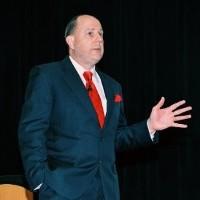Two powerful behavioral science techniques for influencing behavior are framing and gamification.
Framing refers to the way a statement or questions is asked. Asking it in different ways yields different responses -- even though the end results are the same. For example, most people would take you up on an offer to flip a coin where heads means you win $10 and tails means you win nothing. But if you give change the offer to one where you would give the person $5 to flip a coin where the results would be he gets an additional $5 for heads and loses the initial $5 if its tails, the loss aversion in people would cause more people not to engage. The end result would be the same: $0 or $10. Daniel Kahneman and Amos Tversky document dozens of such situations where framing a decision differently changes peoples' behavior -- even though the end results are the same. This work was formalized in Richard Thaler's paper, ""Toward a Positive Theory of Consumer Choice." This approach can be used in promotions to ensure that the "framing' of the promotion garners the strongest result.
Gamification refers to making a game out of certain behaviors. For example, people on long-term medication regimens often lapse and fail to take their medication. But if taking medication were made into a game and patients received a score for taking their medication, adherence to their prescriptions increases. Rewards may be simple attaboys such as rising to the next level in the game or getting a super power. If the game is a team game, where multiple patients benefit from each patient's taking their medication, adherence increases even more. And if the games are made competitive, adherence can be increased still further. A pharmacy may offer a small reward (e.g., a discount) to customers who return for renew their prescriptions do so within 1 day after the expected end of their previous prescription. The discount may not only prompt the customer to take his medication on time, but motivate the customer to return to the same pharmacy each time to earn the reward.
Jeff Stollman is the chief scientist at Rocky Mountain Technical Marketing, Inc., a small business consulting firm. My Stollman has a patent pending on using gamification to improve patient medication adherence.










